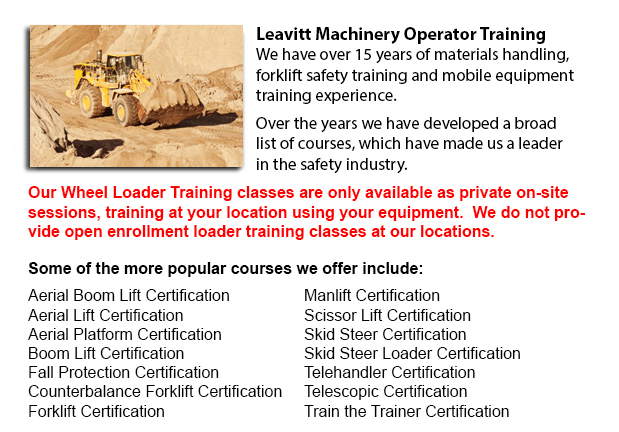
Lift trucks are accessible in several load capacities and a variety of units. Nearly all lift trucks in a typical warehouse situation have load capacities between 1-5 tons. Larger scale units are utilized for heavier loads, such as loading shipping containers, could have up to 50 tons lift capacity.
The operator can use a control in order to lower and raise the blades, that are also known as "tines or forks." The operator can likewise tilt the mast in order to compensate for a heavy load's propensity to tilt the blades downward to the ground. Tilt provides an ability to operate on rough ground also. There are yearly contests intended for skilled lift truck operators to contend in timed challenges as well as obstacle courses at regional lift truck rodeo events.
General utilization
Forklifts are safety rated for cargo at a particular limit weight as well as a specified forward center of gravity. This essential info is supplied by the maker and placed on a nameplate. It is essential cargo do not go over these details. It is prohibited in a lot of jurisdictions to tamper with or take out the nameplate without obtaining consent from the lift truck maker.
Most lift trucks have rear-wheel steering so as to enhance maneuverability within tight cornering situations and confined spaces. This type of steering differs from a drivers' initial experience with different vehicles. For the reason that there is no caster action while steering, it is no required to use steering force in order to maintain a continuous rate of turn.
Unsteadiness is one more unique characteristic of forklift operation. A continuously varying centre of gravity occurs with each and every movement of the load between the forklift and the load and they need to be considered a unit during use. A forklift with a raised load has centrifugal and gravitational forces that can converge to result in a disastrous tipping mishap. So as to avoid this from happening, a lift truck must never negotiate a turn at speed with its load elevated.
Forklifts are carefully designed with a specific load limit utilized for the blades with the limit decreasing with undercutting of the load. This means that the cargo does not butt against the fork "L" and will decrease with the elevation of the fork. Usually, a loading plate to consult for loading reference is placed on the forklift. It is unsafe to use a lift truck as a personnel lift without first fitting it with specific safety equipment such as a "cherry picker" or "cage."
Lift truck use in warehouse and distribution centers
Forklifts are an important component of warehouses and distribution centers. It is essential that the work situation they are positioned in is designed in order to accommodate their efficient and safe movement. With Drive-In/Drive-Thru Racking, a lift truck needs to go inside a storage bay that is several pallet positions deep to set down or obtain a pallet. Operators are usually guided into the bay through rails on the floor and the pallet is placed on cantilevered arms or rails. These confined manoeuvres require well-trained operators so as to complete the task safely and efficiently. In view of the fact that each and every pallet requires the truck to go into the storage structure, damage done here is more common than with different types of storage. When designing a drive-in system, considering the dimensions of the blade truck, including overall width and mast width, should be well thought out in order to make sure all aspects of a safe and effective storage facility.
-
Mississauga Crane Training Courses
Mississauga Crane Training Courses - The heavy equipment crane is intended to move, lift and lower heavy stuff. Normally, the crane comes outfitted along with a hoist, sheaves, and chains or wire ropes. Cranes are utilized in the manufacturing, const... More -
Mississauga Telehandler Ticket
Mississauga Telehandler Ticket - The telescopic handler or telehandler is a normally utilized machine in agricultural and industrial applications. This machine is the same in look to a forklift and even works in a similar way, even though telehandler... More -
Mississauga Overhead Crane Ticket
Mississauga Overhead Crane Ticket - An overhead crane is normally used in industrial environments. Likewise referred to as a bridge crane, this equipment includes parallel runways spanned by a traveling bridge. The component that lifts materials is t... More -
Mississauga Forklift Safety Training
Mississauga Forklift Safety Training - Any person who wants to operate a lift truck has to take a forklift safety training program in order to become a certified forklift truck operator. There are various ways to acquire forklift training. Courses ar... More -
Mississauga Heavy Equipment Training
Mississauga Heavy Equipment Training - Normally, the different kinds of heavy equipment training are divided into 2 categories of equipment: those that have rubber tires and tracked vehicles. Tracked vehicles include items such as excavators, cranes,... More -
Mississauga Loader Ticket
Mississauga Loader Ticket - Loaders have been created to operate practically anywhere. They offer optimal traction and maneuverability because of a heavy-duty oscillating joint which offers 45-degree rotating angles toward the left and right, with 10... More -
Mississauga Boom Lift Certification
Mississauga Boom Lift Certification - Elevated work platforms allow maintenance operations and work to be done at levels which can not be reached by whichever other means. Boom Lift Certification Training educates workers about safely operating boom... More -
Mississauga Forklift Training School
Mississauga Forklift Training School - Why A Forklift Operator Must Take A Forklift Training School - Federal and industry regulators have established the criteria for forklift safety training based on their existing standards and regulations. People... More

Forklift Certification Mississauga
TOLL FREE: 1-888-254-6157
Mississauga, Ontario
forkliftcertificationmississauga.com
Email Us
About Us


